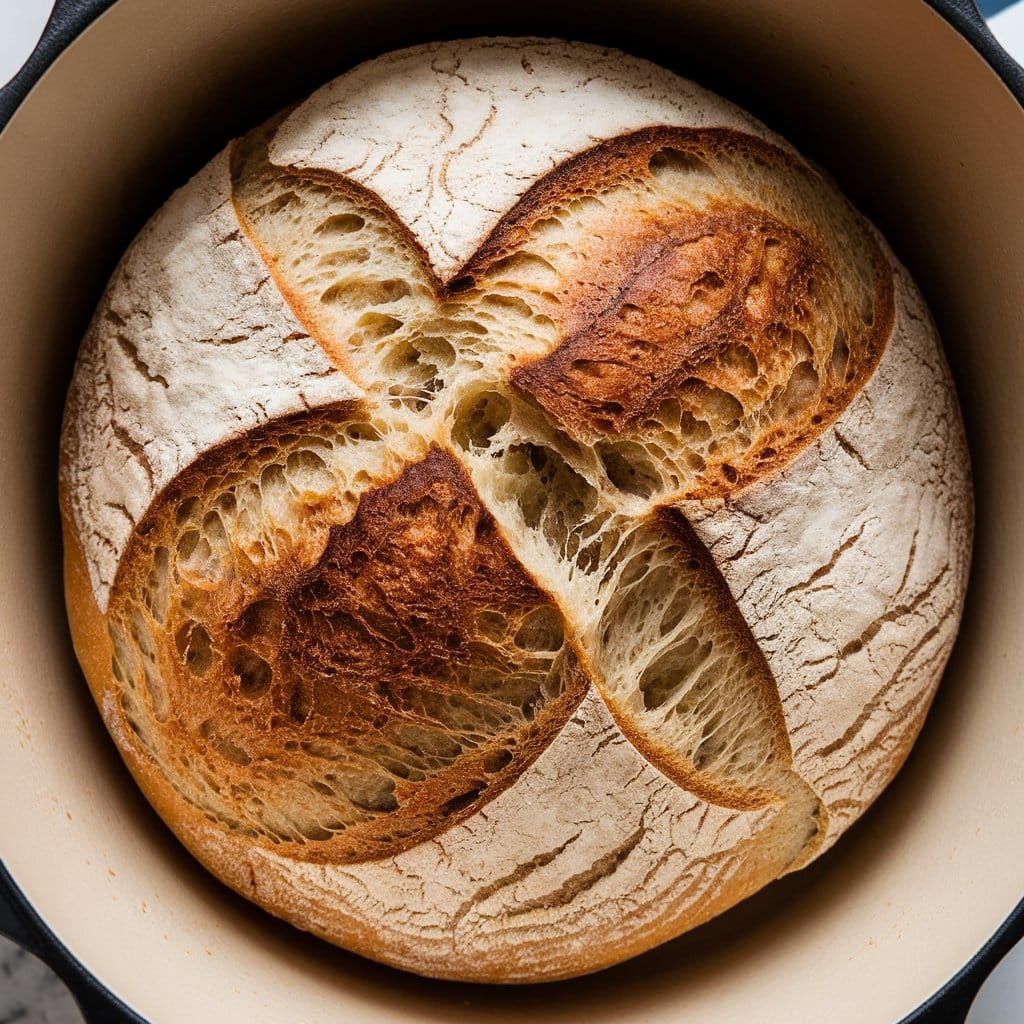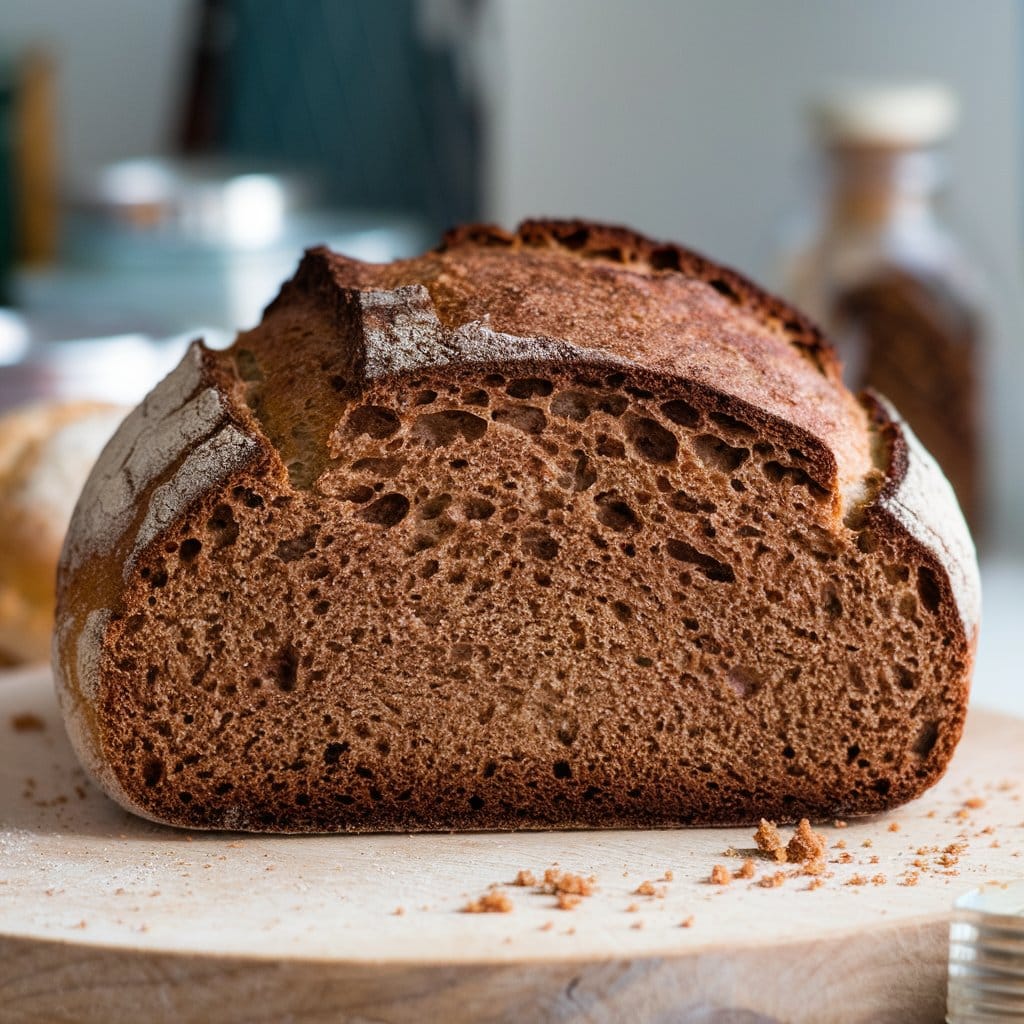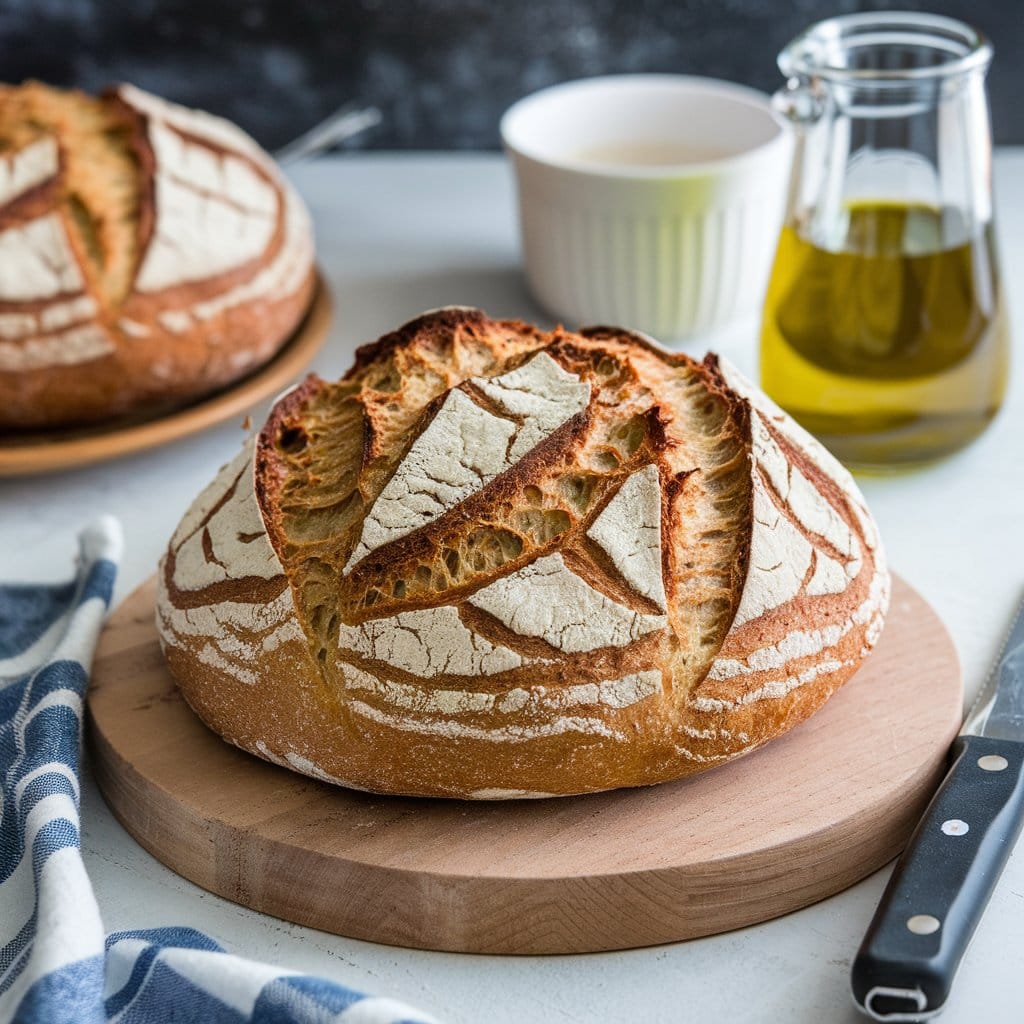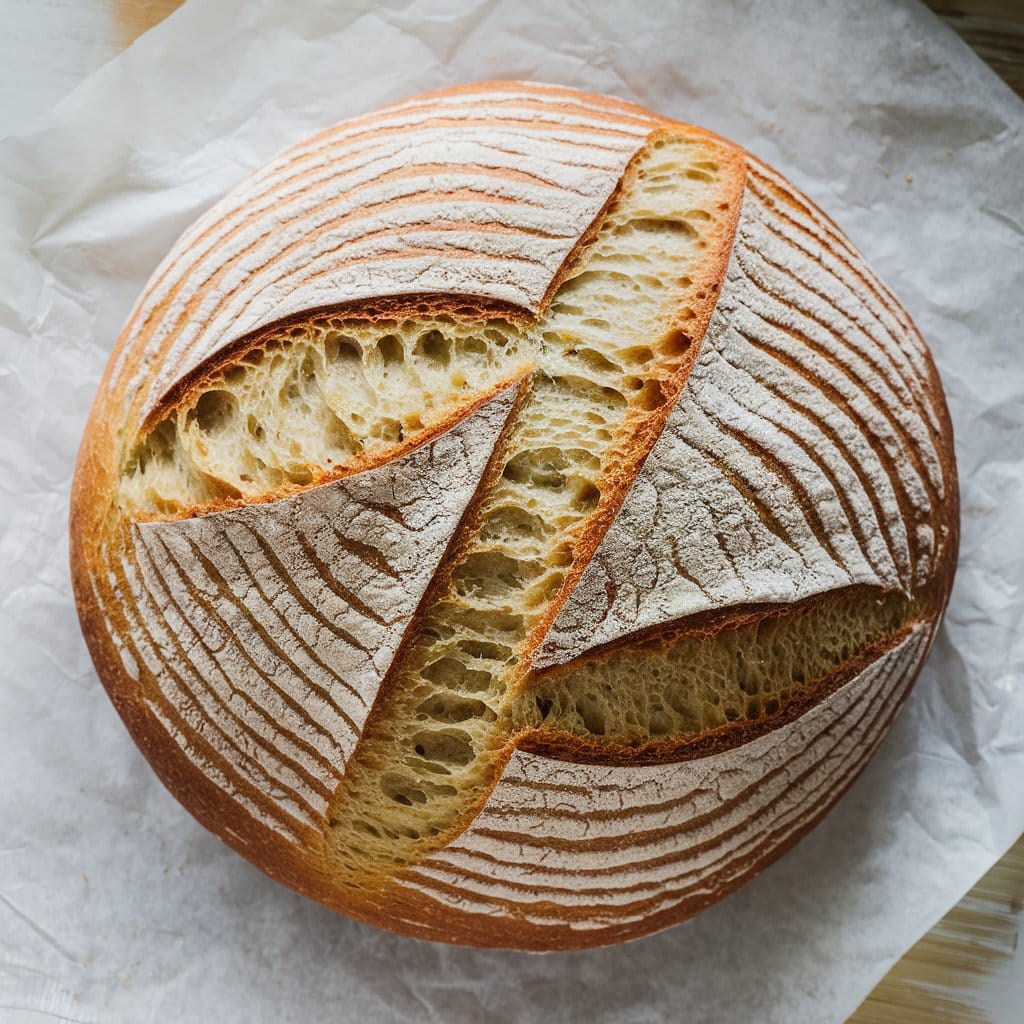Discover the perfect gluten free sourdough bread recipe for a delicious, tangy loaf. Learn techniques and ingredients to create a crusty, flavorful bread at home.
Living gluten-free doesn’t mean you can’t enjoy delicious bread. In this guide, we’ll show you how to make a tasty gluten-free sourdough bread. You can do it all in your own kitchen.
Gluten-free sourdough bread is a great choice for those who can’t eat wheat or prefer healthier options. It combines sourdough’s tangy taste with gluten-free ingredients. This makes a bread that’s not only yummy but also good for you.
Searching for even more delicious Bread Recipes recipes? Try my “Bread Recipes“.

Key Takeaways
- Discover the best gluten-free sourdough bread recipe for a delicious and healthy loaf
- Learn the essential ingredients and step-by-step instructions for creating a gluten-free sourdough starter
- Explore techniques for achieving the perfect rise and baking your gluten-free sourdough bread to perfection
- Understand the benefits of incorporating gluten-free sourdough bread into your diet
- Gain confidence in your gluten-free baking skills and enjoy a freshly baked loaf at home
Gluten Free Sourdough Bread Recipe: A Delicious Alternative
Making gluten-free sourdough bread is a fun challenge for bread lovers. It’s a tasty option for those who can’t eat wheat. With a gluten-free starter, you get the tangy taste and chewy texture of sourdough, but without gluten.
Ingredients for the Perfect Loaf
To make a gluten-free sourdough that’s just as good as the wheat kind, you’ll need a few things:
- Gluten-free flour blend (like rice, tapioca, and potato starch)
- Yeast, either active dry or instant
- Water, at room temperature
- Sea salt or kosher salt
- Olive oil or melted butter (optional, for extra flavor)
Preparing the Gluten-Free Sourdough Starter
A great gluten-free sourdough starts with a good starter. Here’s how to make one:
- Mix equal parts gluten-free flour blend and water in a clean jar.
- Cover it and let it sit at room temperature for 24-48 hours. This lets the yeast start working and gives off a sour smell.
- Throw away some of the starter and add more flour and water. Do this for a few days until it’s bubbly and active.
With the right ingredients and a healthy starter, you’re ready to bake a gluten-free sourdough that will impress anyone.

The Art of Gluten-Free Bread Baking
Baking gluten free sourdough bread needs a special touch and knowledge of gluten-free bread science. It’s all about finding the right mix of ingredients, techniques, and waiting patiently.
One big challenge is gluten’s absence. Gluten gives bread its structure and rise. Gluten-free flours like rice, almond, or gluten free sourdough bread flour need careful mixing to get the right texture and rise.
Creating a gluten free sourdough bread starter is key. It brings out the bread’s complex flavors and helps it rise. Keeping the starter’s temperature, moisture, and feeding schedule right is vital for a healthy starter and a great loaf.
Also, gluten free sourdough bread bakers must use binders like xanthan gum or psyllium husk. These help the dough stay soft and airy, avoiding a dense or crumbly texture.
The true skill in gluten free sourdough bread baking is knowing how to work with gluten-free ingredients. It’s about adapting old techniques to make a tasty and fulfilling loaf. With patience, trying new things, and paying close attention to details, anyone can become a pro at gluten free sourdough bread baking.
Proofing and Shaping Your Gluten Free Sourdough Bread
Getting the perfect rise is key to making a tasty gluten-free sourdough bread. By learning how to proof and shape, your loaf will turn out light and airy. It will also have a crust that’s irresistible.
Tips for Achieving the Perfect Rise
Here are some expert tips to help your gluten-free sourdough bread rise high:
- Make sure the dough is well-hydrated. The right mix of water and flour makes the dough soft and stretchy. This lets it grow during proofing.
- Keep an eye on the proofing area. It should be warm and free from drafts. Temperature and humidity are important for the dough to rise.
- Use a proofing basket or banneton. These tools help the dough keep its shape during the final rise.
- Let the dough proof fully. Don’t rush it. Underbaked dough will be dense and flat.
- Shape the dough gently. Handle it carefully to avoid damaging its delicate structure.
By using these tips, you’ll bake a gluten-free sourdough bread that rises perfectly. It will have a beautiful, airy crumb and a crisp, golden crust.
Baking Gluten Free Sourdough Bread to Perfection
Making the perfect gluten-free sourdough bread needs careful temperature control. By following some key steps, home bakers can get a beautifully baked loaf every time.
Temperature Guidelines for Optimal Results
To get the best out of your gluten-free sourdough bread, keep these temperature tips in mind:
- Proofing Temperature: Keep the temperature between 75-85°F (24-29°C) during proofing. This helps the sourdough starter ferment and develop its flavor.
- Baking Temperature: Heat your oven to 450-475°F (232-246°C) for the first baking stage. This high heat helps the bread rise and gives it a crisp crust.
- Reducing Temperature: After 15-20 minutes, lower the oven temperature to 400-425°F (204-218°C). This prevents the outside from getting too dark while baking the inside.
- Internal Temperature: The bread is done when it reaches 205-210°F (96-99°C). Use a digital thermometer to check for perfect doneness.
By carefully controlling the temperature at each baking stage, you can bring out the best in your gluten-free sourdough bread. This results in a loaf that’s crisp outside and tender inside.
Gluten Free Sourdough Bread Recipe: A Healthier Choice
Gluten-free sourdough bread is not only tasty but also healthier than regular wheat bread. It’s a better choice for your diet because of its nutritional benefits.
Sourdough bread is easier to digest and better at absorbing nutrients. The fermentation process that gives it a sour taste also breaks down gluten. This makes it easier for people with gluten sensitivities to eat. Adding gluten-free flours to sourdough makes it gentle on your stomach and full of good nutrients.
- High in fiber, which promotes healthy digestion and can help maintain blood sugar levels.
- Rich in fundamental vitamins and minerals, such as B vitamins, iron, and magnesium.
- Lower in carbohydrates compared to traditional breads, making it a more balanced option for those watching their carb intake.
- Free from the common allergens found in wheat-based breads, making it a safer choice for those with food sensitivities.
Adding gluten free sourdough bread recipes to your diet is a smart move. You get to enjoy sourdough’s great taste while benefiting from a bread that’s better for you. It’s good for your taste buds and your health.

Conclusion
This guide has given you the top gluten free sourdough bread recipe. It also teaches you how to make a tasty, crusty loaf at home. Now, you can enjoy the special flavor and health perks of this bread.
The recipe and steps guide you from making the gluten-free sourdough starter to baking the perfect loaf. With the right ingredients, patience, and care, you can make gluten free sourdough bread that’s both tasty and healthy.
If you’re on a gluten-free diet or just want a tasty bread option, this gluten free sourdough bread recipe is perfect. Start baking gluten-free and enjoy the amazing taste and texture of your homemade bread.
FAQ
What are the key ingredients required for a gluten-free sourdough bread recipe?
To make gluten-free sourdough bread, you need a gluten-free flour blend, water, yeast, and a gluten-free sourdough starter. The exact amounts can change based on the recipe. But these ingredients are the main ones for a tasty gluten-free sourdough loaf.
How do I prepare a gluten-free sourdough starter?
To make a gluten-free sourdough starter, mix gluten-free flour, water, and a bit of active dry yeast. This mix is then fed and cared for over days to get the right tangy flavor and rise. You’ll need to regularly throw away and add to the starter to keep it alive and active.
What are the key techniques for achieving the perfect rise and baking results with gluten-free sourdough bread?
For the best rise and baking results, focus on proper proofing and shaping. This means managing fermentation and proofing times well and shaping the dough gently. Also, baking at the right temperature and for the right time is key for a crusty, evenly baked loaf.
What are the health benefits of incorporating gluten-free sourdough bread into my diet?
Gluten-free sourdough bread has health perks over regular wheat bread. The fermentation process makes the bread easier to digest for those with gluten sensitivities. It also might be more nutritious, as fermentation can make vitamins and minerals more available.

